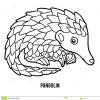This is an old revision of the document!
Table of Contents
Optimize!
The “Optimize!” button is available in the Automatic Optimization section of the Optimize tab. This button displays the Local Optimization tool for automatic optimization of the current optical system.
Settings:
Algorithm Local Optimization uses a Damped Least-Squares or Orthogonal Descent algorithm to improve or modify a design to meet specific conditions.
Damped Least Squares (DLS) uses numerically computed derivatives to determine a direction in solution space which produces a design with a lower merit function. This gradient method has been developed specifically for optical system design and is recommended for all optimization problems.
Real Monospaced??
- Ooooh! Numbered!!
- Even better!
- Now that's nicety!
Orthogonal Descent (OD) uses an orthonormalization of the variables and discrete sampling of solution space to reduce the merit function. The OD algorithm does not compute numerical derivatives of the merit function. For systems with inherently noisy merit functions, such as non-sequential systems, OD will usually outperform DLS. For a discussion of a similar algorithm, see S. Kudaev, P. Schreiber, “Automated optimization of non-imaging optics for luminaries”, in Optical Design and Engineering II; Laurent Mazuray, Rolf Wartmann, Eds., Proc. SPIE 5962, p. 87-95 (2005).
Note that both DLS and OD are local optimization algorithms whose final results depend upon the starting point. For global optimization, see “Global Optimizers”.
# of Cores Selects the number of cores over which to spread the optimization task. More than 1 may be selected, even on a single CPU computer, in which case the single CPU will time share the multiple simultaneous tasks. The default is the number of processors detected by the operating system.
Cycles Select the number of optimization cycles. 1 Cycle Executes a single optimization cycle, 5 Cycles Executes 5 optimization cycles, etc. Inf. Cycles Executes optimization cycles in an infinite, continuous loop until “Stop” is pressed.
Selecting Automatic will cause the optimizer to run until no progress is being made. Automatic mode is highly recommended. The time required to run a given optimization cycle varies enormously with the number of variables, the complexity of the system, the number of solves, the number of operands, and of course the computer speed. If the cycle is taking too long, or if it appears to be hung up, or if you feel the design is not progressing adequately, click on Stop to end the optimization run.
Auto Update If checked, OpticStudio will automatically update and redraw all open windows at the end of each optimization cycle. This allows monitoring of the optimization progress using any analysis feature. Note that the fastest rate at which the windows can update is once every 5 seconds, in order to maintain responsivity of the user interface during the updates.
Start Starts the optimization.
Stop Stops a running optimization, and returns control back to the dialog box.
Save Saves the current settings to the OpticStudio configuration file.
Load Loads the last saved settings.
Reset Resets all settings to default.
Discussion:
The Local Optimization (or simply, “Optimization”) feature provided by OpticStudio is quite powerful, and is capable of improving lens designs given a reasonable starting point and a set of variable parameters. Variables can be curvatures, thicknesses, glasses, conics, parameter data, extra data, and any of the numeric multi-configuration data. OpticStudio uses either an actively damped least squares or an orthogonal descent algorithm. The algorithms are capable of optimizing a merit function composed of weighted target values; these target values are called “operands”. OpticStudio has several different default merit functions which can be changed easily using the Merit Function Editor. For details on this procedure see “Modifying the merit function.”
When the optimization begins, OpticStudio first updates the system merit function. If any of the operands cannot be computed, the optimization cannot begin, and an error message will be displayed. Operands cannot be computed if they require the tracing of rays which miss surfaces or which undergo total internal reflection (TIR) at an index boundary. If such an error message appears, usually the starting lens prescription is in error, or the ray targets are incorrectly defined (this will not happen with the default merit functions, but might happen with user defined rays). OpticStudio can automatically recover if the merit function cannot be evaluated during the course of optimization; only the starting system need be adequate to compute all operands in the merit function.
See Optimization Overview for a full discussion of building merit functions, setting variables, and using the optimization feature.
See also
Next:
Remove All Variables
asdsadsadsadasdsadada
da
sda
sd
asd
asd
asdasadadad
Great editor !!
I wish we could paste images that can be saved automatically.
I wish we could use basic HTML tags, such as H1, H2, etc for font sizes.
I wish I could but I don't want to.
huh!

- This is fine.
- this is nice
this is a test.
Nothing to see here.
| Test | Testtest |
| Qwertz | Gfdsa |





